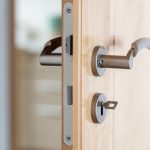Servo motors have been present for a long time and are utilized in many applications. They are quite small in size, but extremely energy efficient. Due to these features, they can be of help when operating remote-controlled or radio-controlled toy cars, robots or airplanes. Servo motors are useful as well in robotics, various industrial applications, food services, in-line manufacturing and pharmaceutics.
If you are looking for simple, yet in depth guide when it comes to learning how to use servo motors Australia suppliers offer, below you can find some basic explanations that will get you on the right track.
Servo motors feature pulse width modulation (pwm) from a microcontroller or a 555 timing IC in order to know what position to move their horn to. Clockwise or counterclockwise movements are made available due to an H bridge that is hardwired into them. Unlike common electric motors, servo motors do not operate in continuous rotations, the typical servo motor moves between 0 and 180 degrees and is applicable for robotics and animatronics.

The servo features three wires coming out of it that normally end in a female jack. Black wires connect to the ground, red ones to the positive power supply, whereas the white or yellow wires are connected to the output of the microcontroller or 555 IC, and pick up the pwm. The most important thing you need to do is to ensure that the servo motor is working. We mentioned that the servo wires end in a female header, therefore you cannot plug it into the arduino (unless you have a shield).
You should insert stable core wires into the headers, so you can attach them to the pins of the arduino. Once you have downloaded your programming setting for arduino, you should check whether it comprises two examples for the servo. The one that is supposed to be used first is named “sweep”. You should go to the “open” icon right next to “save”, click on it, go down to servo, put the arrow on it and click on “sweep”. Then, you should pick up the code and upload it to the board. If everything is working properly, the servo will begin to go from 0 to 180 degrees, back and forth.
Once you’ve made sure that the servo works, you can start adding the sensors in the mix. Firstly, you’ll need to use a potentiometer, any number between 10 and 100k and keep the servo connected. The top pin is supposed to be attached on the pot to 3.3v – on the arduino.
Next, you should join the bottom pin to the ground on the board. Adjust the center of the wiper pin of the pit to A0, then go to “open”. Then you ought to go to servo, open Knob, pick up the code and upload it to the board. With a potentiometer, you’ll be able to control the movement of the servo while the program is running. You’ll also need to set up a sensor, for instance a QRD1114 reflective sensor, for which you will need: a QRD-1114, a 10k resistor, 68 or 100ohm resistor and a wire.
In order to make a servo that moves whenever something is in front of it and moves back when the opposite is true, you need to replace the pot with the sensor set up. Just use the same code that you did for the potentiometer, but this time connect pin number 1 on the qrd to A0 on the board. Join the two resistors to 3.3v, and adjust pin 4 and 2 on the qrd to the ground on the arduino board. By deciding to use servo motors Australia suppliers offer, specifically, the models with sensors, you can have fun making robots, animatronics or anything else you can think of.





Comments are closed.